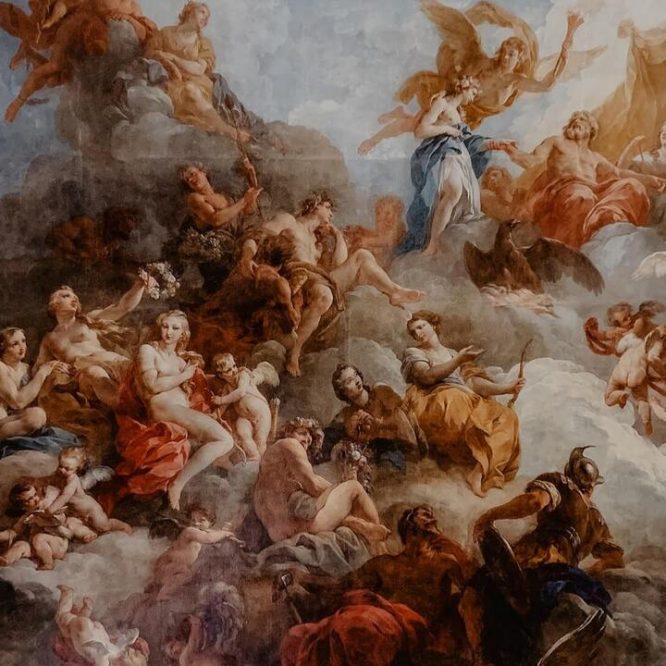Art has long served as a testament to humanity’s cultural, social, and emotional tapestry, encapsulating the essence of our existence. At the heart of artistic expression lies the portrayal of the nude form, an enduring theme that transcends time and cultural confines. From the hallowed marble sculptures of ancient Greece to the dynamic canvases of modern-day creators, the depiction of the human body sans clothing has been an ever-present canvas for creativity, provocation, and contemplation, much like a lot of teen porno you can find today. This expansive exploration endeavors to unravel the multi-layered history, intrinsic symbolism, and evolutionary journey of nudity in art across diverse epochs and civilizations.
The Dawn of the Nude
Ancient civilizations, notably Greece, held a profound admiration for the human body’s aesthetics and physical prowess. In the Classical period, nudity became a symbolic language for conveying divine ideals and the pursuit of physical perfection. Sculptures like the “Discobolus” and the “Venus de Milo” exemplify the meticulous craftsmanship and idealized beauty associated with the celebration of the naked form.
The Shadowed Middle Ages
The Middle Ages ushered in a period where religious themes dominated artistic expression. The Church’s influence led to a notable decline in the depiction of nudity, as art leaned heavily toward religious symbolism and dogma. The suppression of the celebration of the human form during this era starkly contrasts with the preceding reverence for nudity in antiquity.
Renaissance Rediscovery
The Renaissance, a pivotal period in art history, witnessed a revival of interest in classical ideals. Artists such as Michelangelo and Leonardo da Vinci rekindled the flame of appreciation for the human body’s perfection, symmetry, and proportion. Masterpieces like “David” and “The Vitruvian Man” showcased an unprecedented level of anatomical accuracy and a renewed celebration of the nude form’s beauty.
The Baroque Drama
The Baroque era brought forth a dramatic shift in artistic expression. While religious themes continued to prevail, artists like Rubens and Caravaggio infused their works with emotional intensity and a heightened sense of realism. Nudity in this period was not merely an aesthetic choice but a means of conveying the raw, unbridled emotions and elegance of the human body, as evident in works like “The Death of the Virgin.”
The 19th Century Romantics
The 19th century Romantic movement sought to evoke profound emotion and imagination. Nudity during this period was employed as a tool to convey vulnerability, sensuality, and a deep connection with the natural world. Paintings such as Girodet’s “The Sleep of Endymion” epitomized this era’s inclination towards the sublime and emotionally charged portrayal of the nude, capturing the essence of human passion and introspection.
20th Century Revolution
The 20th century marked a revolutionary period in art, with movements like Cubism, Surrealism, and Abstract Expressionism challenging established norms. Artists like Picasso and Dalí redefined the nude, breaking away from traditional representations. Picasso’s fragmented “Les Demoiselles d’Avignon” and Dalí’s surrealistic “The Great Masturbator” explored the subconscious and subjective aspects of the nude, symbolizing a departure from classical ideals.
Contemporary Paradigms
In the contemporary art scene, the portrayal of the nude form continues to be a subject of exploration, albeit with more diverse and nuanced interpretations. Artists engage with nudity across various mediums—painting, sculpture, performance, and digital art—offering fresh perspectives on identity, gender, sexuality, and societal norms. Works like Spencer Tunick’s mass nude photography and Jenny Saville’s challenging portrayals redefine conventional notions of the nude, reflecting the complexities and diversity of the modern human experience.
Conclusion
The evolution of nudity in art is a profound narrative interwoven with the fabric of human history, reflecting the intricate interplay between societal values, artistic expressions, and evolving perceptions. Across millennia, the portrayal of the nude form has transcended being a mere artistic subject; it embodies a multifaceted reflection of our aspirations, beliefs, and evolving sensibilities. From the divine idealization in ancient sculptures to the avant-garde interpretations of contemporary artists, the naked body in art has been an eternal canvas, encapsulating beauty, vulnerability, rebellion, and introspection. Its enduring presence echoes our innate fascination with human form, offering a timeless dialogue on the complexities, beauty, and vulnerabilities intrinsic to the human experience. This exploration is a testament to the perpetual allure and ever-evolving narrative of the nude in art, an eternal testament to the depths of human creativity and the ceaseless exploration of our existence through artistic expression.
